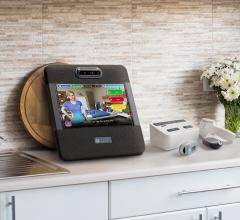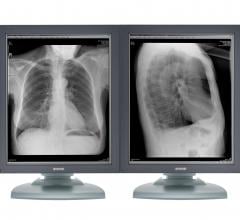Today’s remote viewing systems will stimulate changes and challenges in healthcare in a manner similar to what online banking has done for the financial industry. The areas of improvement include safe, secure, remote access from any browser, or ultimately any mobile device. This is the reality of today, and it comes without the need for special applications or image and associated data downloads from virtually any source.
For many years, picture archiving and communication system (PACS) has been touted in the industry as any image, anytime, anywhere. But the reality was much different than that. It was really most radiology images, sometimes and from most places, and only as long as you had the necessary applications, a high-end PC and a good network. Streaming technologies did their best to address this and did serve a purpose, but it has not been until now that ubiquitous access has become a reality. This reality is advancing healthcare by delivering benefits for radiologists, technologists and ultimately all caregivers, by making medical images of all kinds available to the point of care.
Ultimate Efficiency for New Levels of Care
For radiologists, their work is centered on delivering reports to the primary caregiver. Images were made available, but typically only to a select few clinicians with the infrastructure, software and advanced training to view them. With today’s modern viewers utilizing common Internet technologies, access to images and reports is simplified by removing infrastructure constraints and permitting any authorized person to see and manipulate images with no software to download. No longer will published radiology results be merely text-based; they will be a multimedia information package that positions the radiologist as more of a consultant and provides greatly improved information.
Not that long ago, the industry standard to share images was by carrying and sending films. Then we switched to CDs and DVDs; however, we still depended on a person carrying physical media. Now remote viewing systems can deliver images built around applications to share images over the Internet. Referring physicians and the patients they treat depend on getting data quickly, and Web technologies in modern viewers ensure this happens in a way not previously possible.
The Enterprise Challenge
Medical imaging is not restricted to radiology. Healthcare systems are facing increasing challenges in effectively managing and sharing all clinical imaging data across the enterprise. This challenge is exacerbated by an explosive growth in imaging data and a sprawl of vendor-proprietary data silos (PACS) that have locked-in both their users and the organization’s data.
Today’s CIOs can break this deadlock by serving as the stewards of their organization’s clinical imaging information. By offering enterprise-class image management services, diagnosticians can be afforded freedom of choice for tool selection, while clinicians are provided with access to all images and results inside a universal remote viewer through the electronic medical records (EMR).
The Wish List of Technologies
A modern remote viewer can solve enterprise distribution and viewing needs, enabling a longitudinal imaging patient record in the continuity of care. Gone are the days where DICOM data had to be migrated to a proprietary remote viewer with its own data cache and expensive storage. Modern viewers connect using standards to existing PACS, vendor-neutral archives (VNA) and even stand-alone modalities utilizing the existing storage to read the data from.
Application program interfaces (API) integrate these remote viewers seamlessly in the EMR and avoid the need to switch to a different application when viewing a patient’s medical history. Enterprise medical image viewers, which allow clinicians to access imaging information securely and independent of location on a variety of Web-enabled devices, can be launched from the EMR, health information exchange (HIE) or most any Web app. They are easily deployed to existing PCs, tablets and mobile devices. Clinicians will benefit, as it allows them to easily manage consultations with colleagues and provide patient education.
For improved care delivery, the ability to store an image once and integrate it everywhere without having to send images will make the concept of personal health records (PHRs) a reality. Patients will be more involved healthcare decisions and access to their records will be fundamental.
All clinical users in an enterprise will benefit from a viewer component in their EMR. Referring physicians and other caregivers can view historical images at the time of ordering, at the point of care and to share with patients, which may prove beneficial to the entire diagnostic chain.
Mobile support provides clinicians fast and on-demand access to their patients’ images and reports, regardless of the location or origin. This will improve turnaround time for treatment and will serve entire communities of patients, enabling images to be seen in one display via HIEs in an HIE image, or on any PACS or VNA.
Modern viewers can help lower healthcare costs by eliminating the need for repeat exams by making access so ubiquitous. It has the ability to improve diagnostic confidence by removing technology barriers to access the complete medical record. It will facilitate peer-review by leading experts and will make a clinical consultation as easy as an instant message or phone call. It also allows secure access to patient imaging data from all sources in one view, connecting to virtually any PACS, VNA or modality.
The Future
Today’s remote viewers do not require a special video card specific server or PC. The application is loaded in a customer supplied virtual machine (VM) environment utilizing the existing storage and application.
Remote viewing technology has the ability to impact all healthcare providers and their patients, changing the practice of imaging the way the first PACS changed radiology in the 1990s.
Lenny Reznik is the director of enterprise image and information management systems at Agfa HealthCare. He has 20 years of experience with PACS and healthcare IT.

 November 20, 2025
November 20, 2025 









